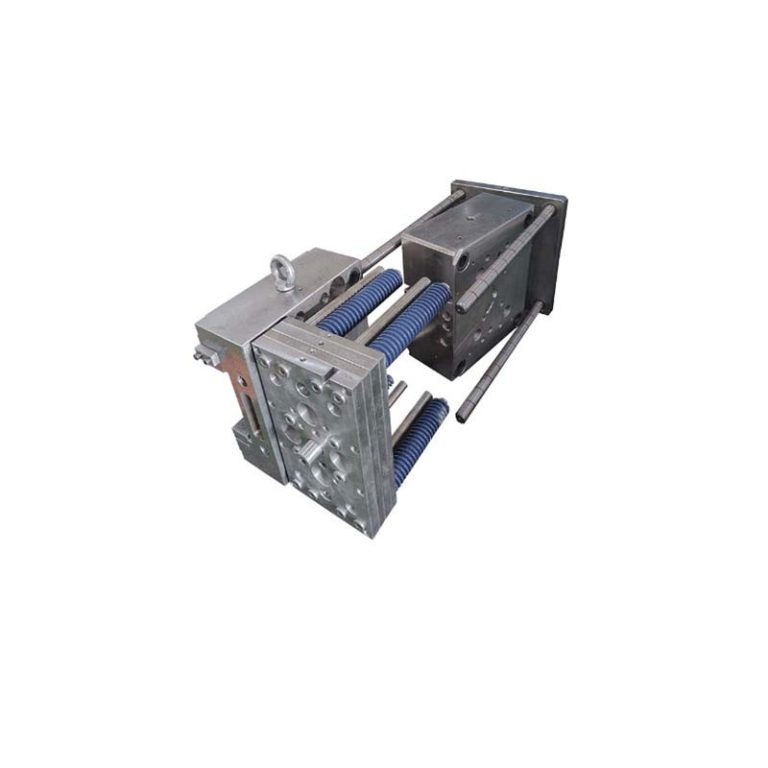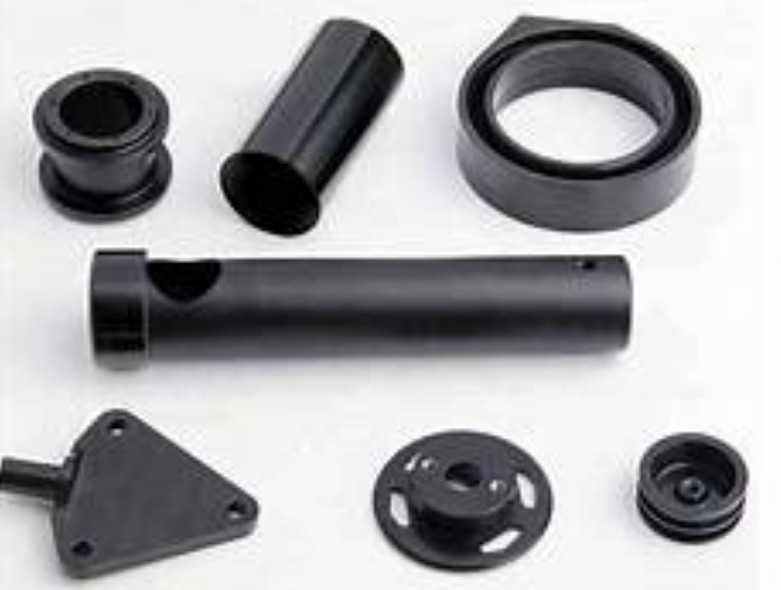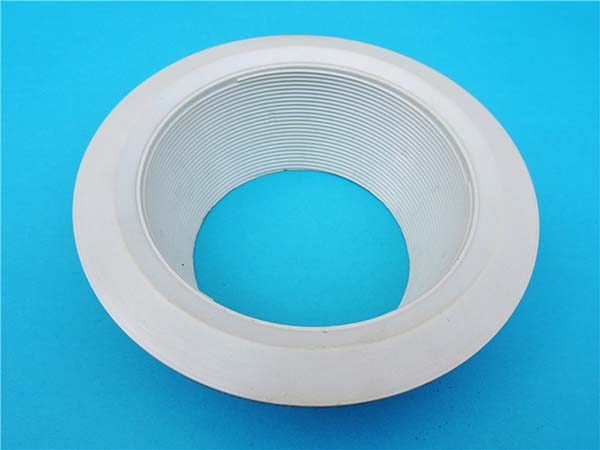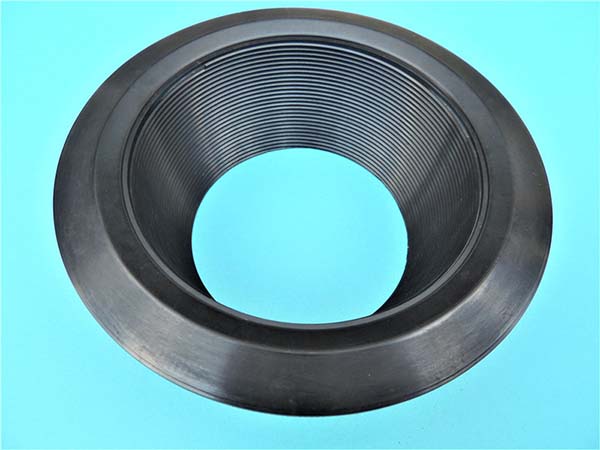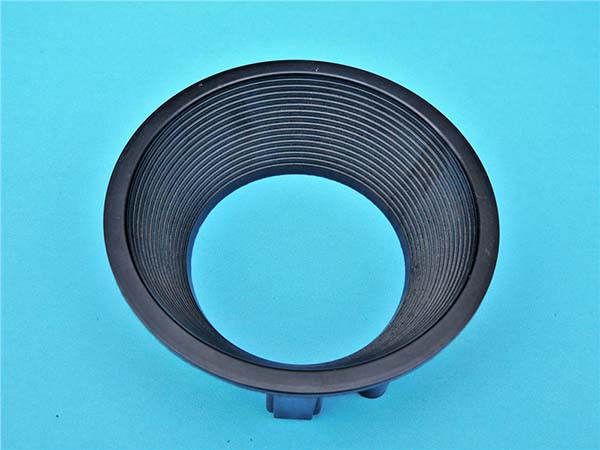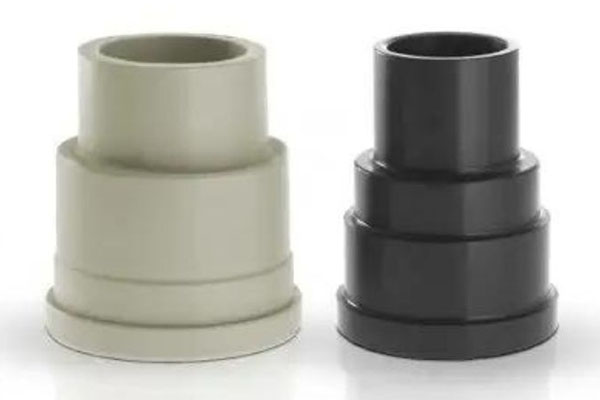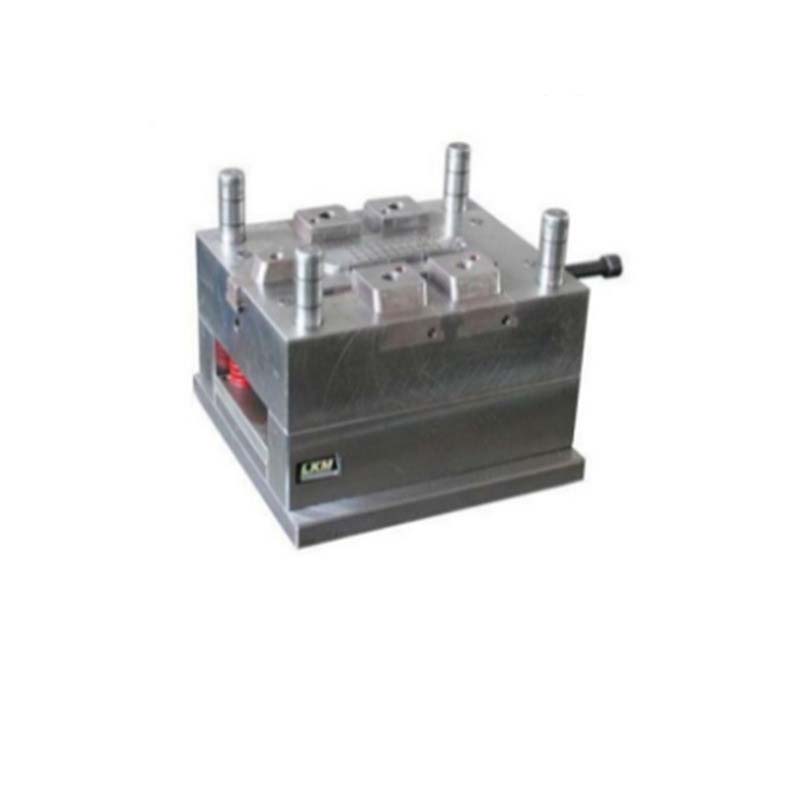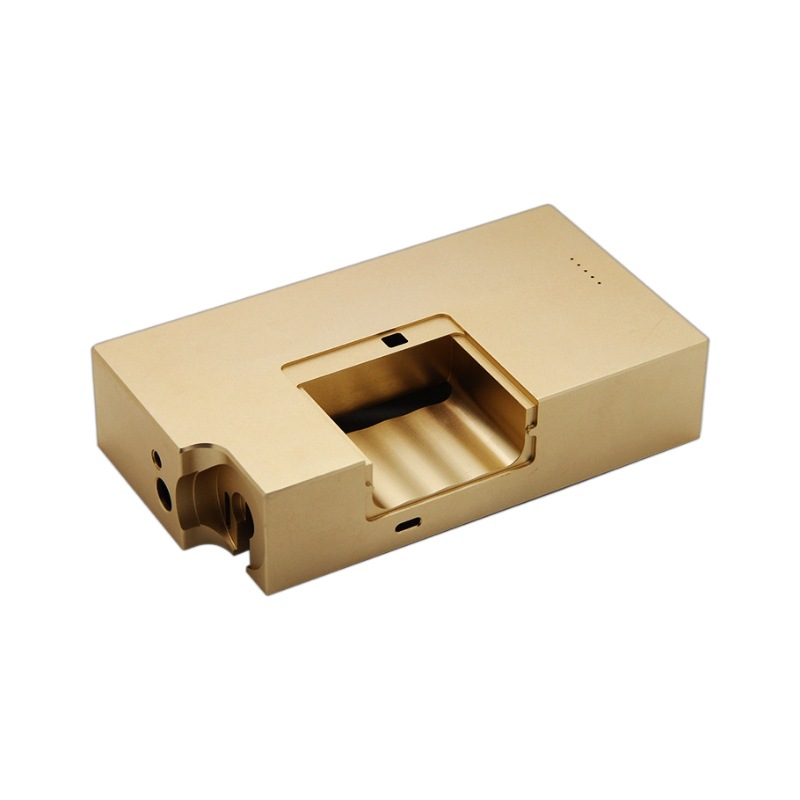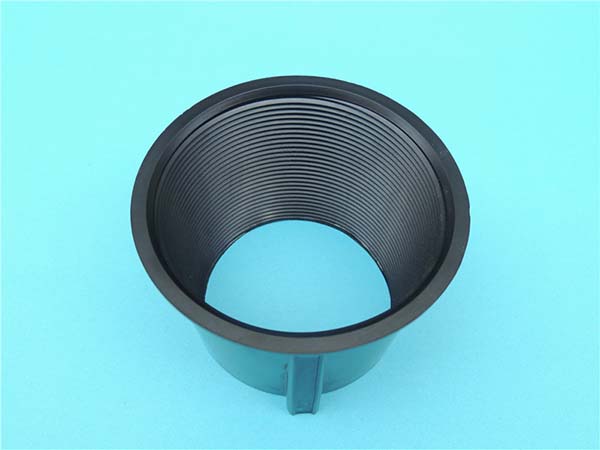The Basics of Plastic Product Manufacturing
Plastic product manufacturing is a complex and fascinating process that involves a series of steps, from the selection of raw materials to the final production of the finished product. To truly understand the truth behind plastic product manufacturing, it's essential to first explore the fundamental aspects of this industry.
Raw Materials: The Building Blocks of Plastic Products
The journey of plastic product manufacturing begins with the choice of raw materials. The most common raw materials for plastics are derived from petrochemicals, such as crude oil and natural gas. These hydrocarbons are processed through various chemical reactions to produce monomers, which are the basic units that combine to form polymers.
For Yigu Technology example, polyethylene (PE) is one of the most widely used plastics, and it is made from the monomer ethylene. Polypropylene (PP), another common plastic, is produced from the monomer propylene. Each type of plastic has its own unique set of properties, depending on the chemical structure of the polymer and the manufacturing process used.
Here is a simple comparison table of some common plastics and their properties:
| Plastic Type | Density (g/cm³) | Melting Point (°C) | Chemical Resistance | Common Applications |
| Polyethylene (PE) | 0.91 - 0.96 (LDPE - HDPE) | 105 - 135 (LDPE - HDPE) | Good resistance to most acids and alkalis | Packaging, plastic bags, pipes |
| Polypropylene (PP) | 0.89 - 0.91 | 160 - 170 | Excellent chemical resistance | Food containers, automotive parts, textiles |
| Polyvinyl Chloride (PVC) | 1.3 - 1.4 | 100 - 260 (decomposes) | Good resistance to many chemicals, but sensitive to heat | Pipes, flooring, window frames, packaging |
| Polystyrene (PS) | 1.04 - 1.09 | 240 | Fair chemical resistance, brittle | Disposable cutlery, packaging, insulation |
The properties of these plastics make them suitable for a wide range of applications. For instance, the high chemical resistance of PP makes it ideal for food containers, as it can protect the contents from chemical reactions. The flexibility and low cost of LDPE make it a popular choice for plastic bags.
Manufacturing Processes: Shaping the Plastics
Once the raw materials are selected, the next step is to shape the plastics into the desired products. There are several manufacturing processes available, each with its own advantages and suitable applications.
Injection molding is one of the most widely used processes in plastic product manufacturing. It involves melting the plastic pellets and injecting the molten plastic into a mold cavity under high pressure. The plastic then cools and solidifies inside the mold, taking on the shape of the cavity. This process is highly efficient and can produce complex shapes with high precision. For Yigu Technology example, most plastic toys, electronic device housings, and automotive interior parts are made through injection molding.
The injection molding process can be divided into several key steps:
- Plasticization: The plastic pellets are fed into a heated barrel, where they are melted by the heat of the barrel and the mechanical action of a rotating screw.
- Injection: The molten plastic is forced into the closed mold cavity through a nozzle at high pressure. The pressure ensures that the plastic fills every detail of the mold cavity.
- Cooling: The mold is cooled, usually by circulating water through channels in the mold. As the plastic cools, it solidifies and takes the shape of the mold.
- Ejection: Once the plastic has solidified, the mold opens, and the finished product is ejected using ejector pins.
Extrusion is another important process, especially for producing plastic products with a continuous profile, such as pipes, sheets, and films. In extrusion, the plastic is melted and forced through a die, which gives the plastic its shape. The extruded plastic is then cooled and solidified as it moves away from the die. For example, the plastic pipes used in plumbing systems and the plastic films used in packaging are often produced by extrusion.
The extrusion process typically involves the following steps:
- Feeding: Plastic pellets are fed into the hopper of an extruder.
- Melting and Mixing: The plastic pellets are melted and mixed in the extruder barrel by the action of a rotating screw and the heat applied to the barrel.
- Extrusion through the Die: The molten plastic is pushed through a die, which has a specific shape corresponding to the desired profile of the final product. For example, a circular die is used to produce pipes, and a flat die is used to produce sheets.
- Cooling and Solidification: The extruded plastic is cooled, usually by passing it through a water bath or using air cooling. As it cools, the plastic solidifies and maintains the shape imparted by the die.
- Cutting or Winding: The continuous extruded product is either cut into specific lengths (for products like pipes) or wound onto reels (for products like films).
Blow Molding
Blow molding is mainly used for producing hollow plastic products, such as bottles, containers, and toys. There are three main types of blow molding: extrusion blow molding, injection blow molding, and injection stretch blow molding. In extrusion blow molding, a parison (a tube - like piece of molten plastic) is extruded, and then it is placed in a mold. Compressed air is blown into the parison, forcing it to expand and take the shape of the mold cavity. This process is commonly used for making large - scale hollow products like industrial containers and some beverage bottles. Injection blow molding is more precise and is often used for producing small - to - medium - sized containers with high - quality finishes, such as cosmetic bottles. Injection stretch blow molding is used to produce high - quality, high - strength bottles, like those for carbonated beverages. It involves stretching the parison both longitudinally and radially during the blowing process, which improves the mechanical properties and clarity of the final product.
Thermoforming
Thermoforming is a process where a plastic sheet is heated until it becomes soft and pliable. Then, it is formed over a mold using either vacuum or pressure to create the desired shape. This process is often used for making disposable food containers, trays, and packaging for small items. For example, the clear plastic clamshell packaging that you often see for electronics or small consumer goods is made through thermoforming. The thermoforming process can be relatively simple and cost - effective for low - to - medium production volumes. It allows for quick production of parts with relatively simple shapes and is also suitable for a variety of plastic materials, including both thermoplastic and some thermosetting plastics.
Key Factors Influencing Plastic Product Quality
Raw Material Quality
The quality of raw materials is the foundation of high - quality plastic products. High - purity raw materials with consistent properties are crucial for ensuring the performance and durability of the final products. For Yigu Technology example, when manufacturing high - end automotive parts, high - density polyethylene (HDPE) with a high degree of purity is preferred. High - quality HDPE can provide excellent mechanical properties, such as high tensile strength and impact resistance, which are essential for automotive parts that need to withstand various mechanical stresses during use.
In contrast, low - quality raw materials can lead to a host of problems. Take the production of plastic pipes as an example. If the raw material used contains impurities or has inconsistent molecular weight distribution, the resulting pipes may have issues such as poor pressure resistance and low durability. Pipes made from such raw materials are more likely to burst or crack under normal operating pressures, posing a significant risk in water supply and drainage systems.
The purity of raw materials directly affects the chemical and physical properties of the plastic products. For instance, in the production of food - grade plastic containers, any impurities in the raw materials could potentially migrate into the food, affecting its safety and quality. Additives in raw materials also play a vital role. The right amount and type of additives can enhance product performance, but improper use can have the opposite effect. For example, an excessive amount of plasticizer in PVC products can make the plastic too soft and reduce its mechanical strength, while insufficient stabilizers can cause the plastic to degrade quickly when exposed to heat or light.
Manufacturing Equipment and Technology
Advanced manufacturing equipment and technology are key to achieving high - precision, high - efficiency, and stable - quality plastic product production. Modern injection molding machines, for example, are equipped with advanced servo - motor control systems. These systems can precisely control the injection pressure, speed, and temperature during the injection molding process. As a result, the produced plastic parts have higher dimensional accuracy and better surface quality. In a study comparing traditional hydraulic - driven injection molding machines with modern servo - motor - driven ones, it was found that the servo - motor - driven machines reduced the dimensional deviation of plastic parts by up to 50%, and the rejection rate decreased from 8% to 3%.
New manufacturing technologies also bring significant improvements. For Yigu Technology example, multi - material injection molding technology allows for the combination of different plastics or the integration of plastics with other materials in a single molding process. This technology enables the production of more complex and functional products. In the production of some high - end consumer electronics, multi - material injection molding is used to create a single component that combines a rigid plastic structure for protection and a soft - touch plastic surface for a better user experience.
3D printing technology, although not as widely used as traditional manufacturing methods in large - scale plastic production, has its unique advantages in the production of plastic products. It can quickly produce customized plastic parts with complex geometries, which is very useful for prototyping and small - batch production. For example, in the aerospace industry, 3D - printed plastic parts can be used to quickly manufacture lightweight components with complex internal structures that are difficult to produce using traditional methods.
Quality Control Measures
Quality control is an essential part of the plastic product manufacturing process, ensuring that products meet the required standards. Quality control measures are implemented at various stages of production, from raw material inspection to final product testing.
Process Inspection
During the manufacturing process, regular inspections are carried out to monitor the production parameters and the quality of semi - finished products. For example, in injection molding, sensors are used to continuously monitor the temperature, pressure, and injection volume. If any parameter deviates from the set value, the system can immediately issue an alarm, and operators can take corrective actions in a timely manner. This helps to prevent the production of a large number of defective products. In a plastic product factory, through strict process inspection, the proportion of products with process - related defects was reduced from 10% to 5% within one year.
Finished Product Inspection
After the products are produced, comprehensive inspections are conducted to ensure that they meet all quality requirements. This includes appearance inspection, dimensional measurement, and performance testing. Appearance inspection is usually carried out by visual inspection or using optical inspection equipment to check for defects such as scratches, bubbles, and surface roughness. Dimensional measurement is performed using precision measuring instruments such as coordinate measuring machines (CMMs) to ensure that the product dimensions are within the specified tolerance range. Performance testing varies depending on the product's application. For example, plastic pipes are tested for pressure resistance, and plastic containers are tested for leakage.
Here is a table showing some common quality control standards and their corresponding testing items and Qualified scope for plastic products:
| Quality Control Standard | Testing Items | Qualified scope |
| ISO 9001 (General Quality Management System Standard) | Overall product quality, production process control | Products should meet all specified requirements in terms of design, production, and performance |
| ASTM D1238 (Standard Test Method for Melt Flow Rates of Thermoplastics by Extrusion Plastometer) | Melt flow rate | Varies according to the type of plastic; for example, for a certain grade of polyethylene, the melt flow rate may be specified within a range of 2 - 5 g/10min |
| ISO 179 - 1 (Determination of Charpy Impact Properties of Plastics) | Impact strength | Expressed in kJ/m²; different plastics have different specified impact strength values, such as for polypropylene, it may be required to be above 5 kJ/m² |
| GB/T 1040.2 (Plastics - Determination of Tensile Properties - Part 2: Test Conditions for Moulding and Extrusion Plastics) | Tensile strength, elongation at break | Tensile strength is measured in MPa, and elongation at break is expressed as a percentage. For example, for a certain type of engineering plastic, the tensile strength may be required to be at least 50 MPa, and the elongation at break may be required to be more than 10% |
Conclusion
Understanding the truth behind Yigu Technology plastic product manufacturing is essential in today's world, where plastics are an integral part of our daily lives. We have explored the basics of plastic product manufacturing, from the selection of raw materials like polyethylene, polypropylene, polyvinyl chloride, and polystyrene, each with its own unique properties and applications, to the various manufacturing processes such as injection molding, extrusion, blow molding, and thermoforming. These processes, with their specific steps and characteristics, enable the production of a wide range of plastic products that we use in different industries.
The role of additives in enhancing the properties of plastics cannot be overstated. Plasticizers, stabilizers, flame retardants, fillers, and colorants all play crucial roles in improving the performance, durability, and appearance of plastic products. They allow plastics to meet the diverse requirements of different applications, from the safety - critical needs of the electronics and building industries to the aesthetic and functional demands of consumer products.
Key factors influencing plastic product quality, including raw material quality, manufacturing equipment and technology, and quality control measures, are also vital aspects of the plastic manufacturing industry. High - quality raw materials are the foundation for producing reliable plastic products. Advanced manufacturing equipment and technologies, such as servo - motor - controlled injection molding machines and multi - material injection molding technology, can significantly improve product quality and manufacturing efficiency. Stringent quality control measures, implemented at every stage of production, ensure that products meet the required standards and specifications.
As consumers and industry stakeholders, being aware of these aspects helps us make more informed decisions. When choosing plastic products, we can consider factors such as the type of plastic, its properties, and the manufacturing process used. For businesses in the plastic product manufacturing industry, focusing on these areas can lead to the production of higher - quality products, increased customer satisfaction, and a competitive edge in the market.
FAQ
- Q: How can I tell if a plastic product is of high quality?
A: Look for signs such as uniform color, smooth surface without bubbles or scratches, and consistent thickness. Products from well - known brands or those with quality certifications are more likely to be of high quality. You can also check the product's performance based on its intended use, like checking the pressure resistance of a plastic pipe.
- Q: What are the most common raw materials for plastic products?
A: The most common raw materials are derived from petrochemicals. Polyethylene (PE), polypropylene (PP), polyvinyl chloride (PVC), and polystyrene (PS) are widely used. For example, PE is used in plastic bags and pipes, PP in food containers, PVC in pipes and flooring, and PS in disposable cutlery.
- Q: Why are additives added to plastic products?
A: Additives are added to enhance various properties of plastics. Plasticizers make plastics more flexible, stabilizers prevent degradation, flame retardants reduce flammability, fillers improve mechanical properties or reduce costs, and colorants give plastics their color. Each additive serves a specific purpose to meet the requirements of different applications.
